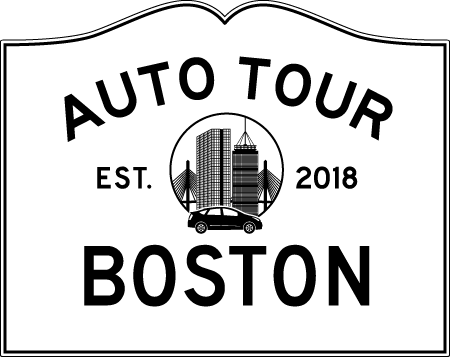History of Turnpikes of New England: Brookline, Pt. 3
1. From:Turnpikes of New England (Frederick J. Wood, 1907. Reprint by Branch Line Press, 1997). P. 144-145.
“In 1810, a turnpike charter was granted to the Boston Neck Turnpike Corporation, which it seems must have been sought in the interest of the Worcester Turnpike Corporation, as to the construction of that road would have given the latter company a better connection with the road leading into Boston. But the corporation was held strictly to its obligations to maintain the ancient highway until the opening of the Punch Bowl Road of the Boston and Roxbury Mill Corporation. That road connected the Worcester Turnpike at the Punch Bowl Tavern with the westerly end of the road over the Mill Dam, and was opened for travel in 1821. By following this new route, over a mile was saved on the journey into Boston. But not until 1826 did it succeed when, on February 15, an act was passed relieving the corporation of all the road east of what is now Brookline Village, providing that it paid two hundred and fifty dollars to the town of Roxbury to recompense that town for assuming where it left the old road and entered upon the new location. Overhead the traveler westward bound read “Worcester 1810 40 miles.”
Just why this arch should have been built at this point, or why it should have been built anywhere, is hard to determine. Its location marked the dividing line between the new road which the corporation built, and the ancient highway which is had appropriated, and it may be that the corporation, exasperated at the continual protests and faultfinding which always followed the passing of an old road into a turnpike, erected this arch to mark the beginning of the section on which it was morally as well as legally entitled to collect toll.
The “ancient highway” at once became the Washington Street of Roxbury. In 1868, the name of part was changed to Tremont Street; in 1874 another portion was named Roxbury Street, and in 1895 the end of the Brookline boundary was called Huntington Avenue.
Present Day Spot: Washington Street at Huntington Avenue. The Arredondo Memorial (JamaicaWay) Bridge.
2. The “Old” Worcester Turnpike
From: PROCEEDINGS OF THE BROOKLINE HISTORICAL SOCIETY AT THE ANNUAL MEETING, JANUARY 23, 1907, BROOKLINE, MASS.
PUBLISHED BY THE SOCIETY MCMVII
3. Boston Post Road Through Brookline
From Wikipedia: Transportation history
“Two branches of upper Boston Post Road, established in the 1670s, passed through Brookline. Brookline Village was the original center of retail activity. In 1810, the Boston and Worcester Turnpike, now Massachusetts Route 9, was laid out, starting on Huntington Avenue in Boston and passing through the village center on its way west.
Steam railroads came to Brookline in the middle of the 19th century. The Boston and Worcester Railroad was constructed in the early 1830s, and passed through Brookline near the Charles River. The rail line is still in active use, now paralleled by the Massachusetts Turnpike. The Highland Branch of the Boston and Albany Railroad was built from Kenmore Square to Brookline Village in 1847, and was extended into Newton in 1852. In the late 1950s, this would become the Green Line "D" Branch.
The portion of Beacon Street west of Kenmore Square was laid out in 1850. Streetcar tracks were laid above ground on Beacon Street in 1888, from Coolidge Corner to Massachusetts Avenue in Boston, via Kenmore Square. In 1889, they were electrified and extended over the Brighton border at Cleveland Circle. They would eventually become the Green Line "C" Branch.
Thanks to the Boston Elevated Railway system, this upgrade from horse-drawn carriage to electric trolleys occurred on many major streets all over the region, and made transportation into downtown Boston faster and cheaper. Much of Brookline was developed into a streetcar suburb, with large brick apartment buildings sprouting up along the new streetcar lines. “
Other Articles:
1. Walking the Post Road, A Blog (2012)
2. For a Trip to New England’s Past, Follow Boston Post Road, Boston Globe (2017)
3. The Old Boston Post Road, Stephen Jenkins, 2017, Excerpt, p. 240





